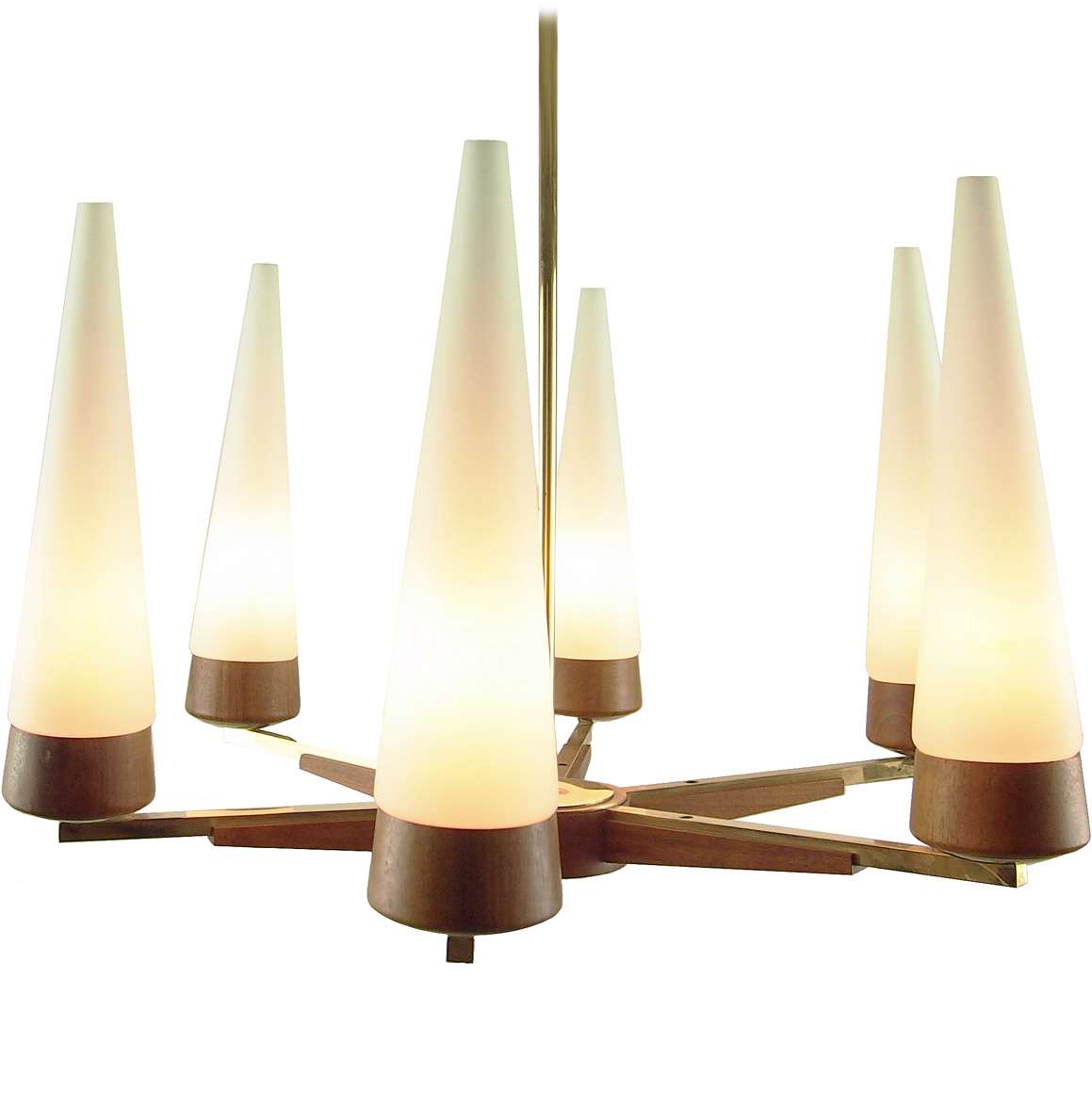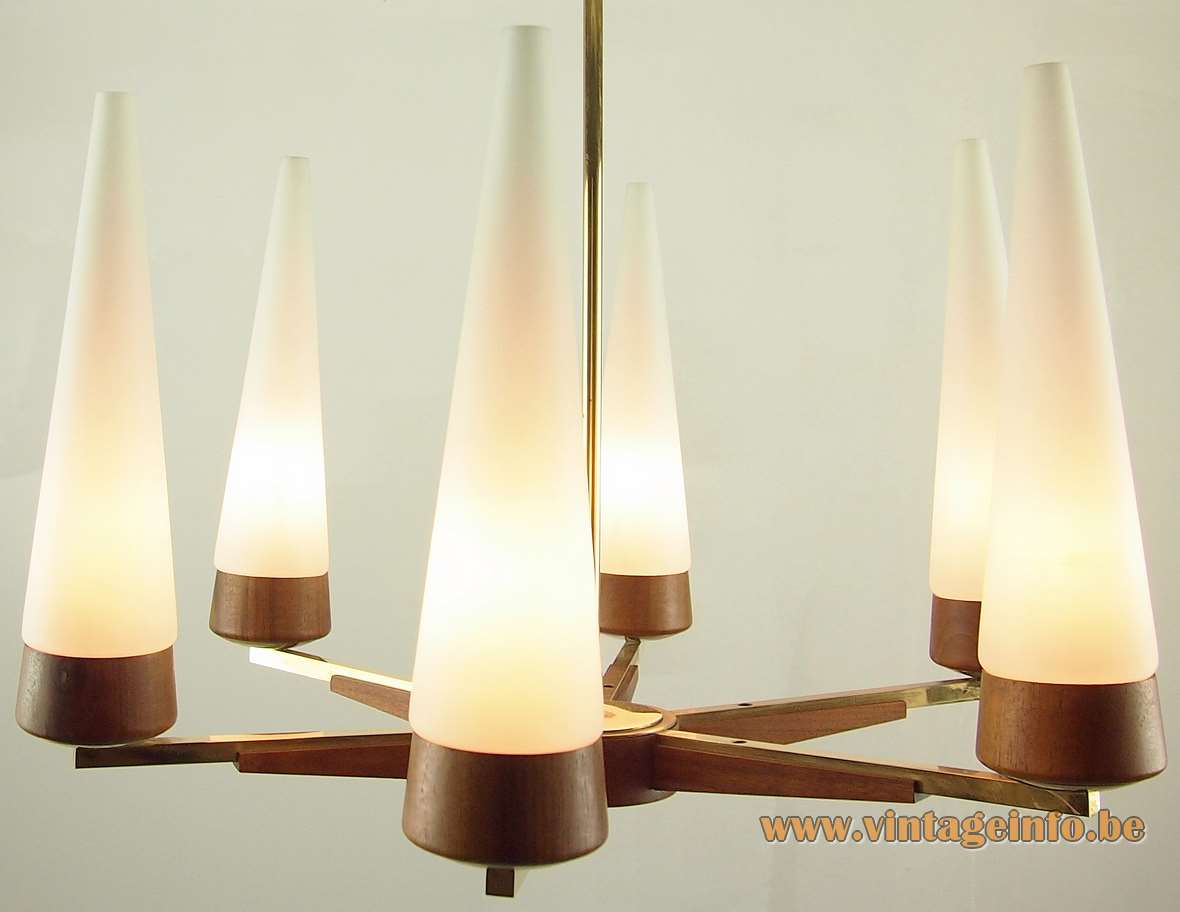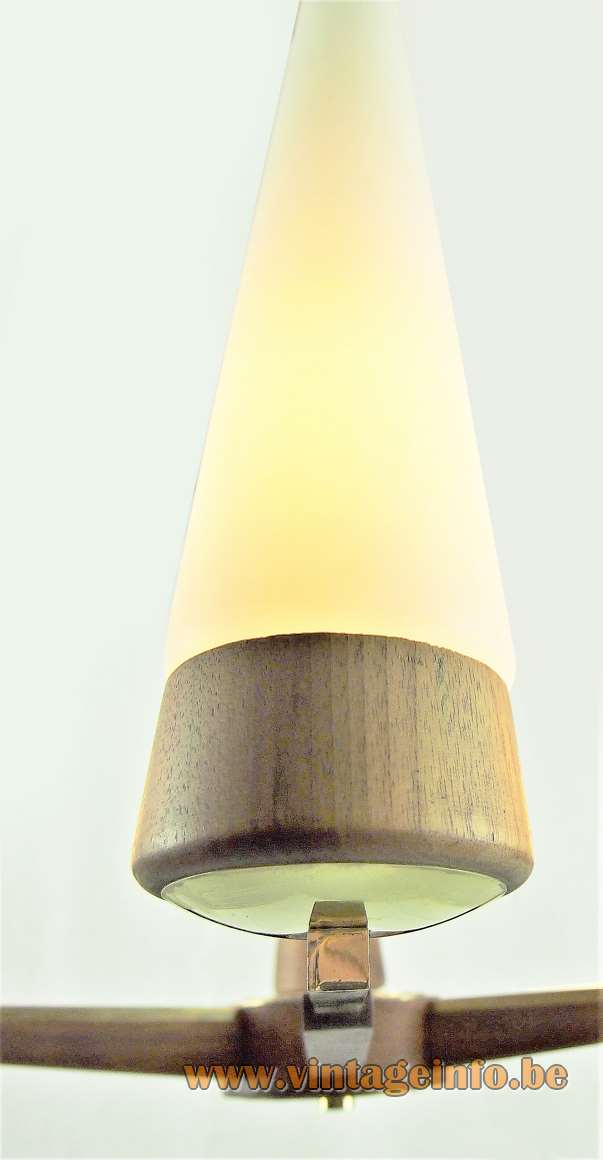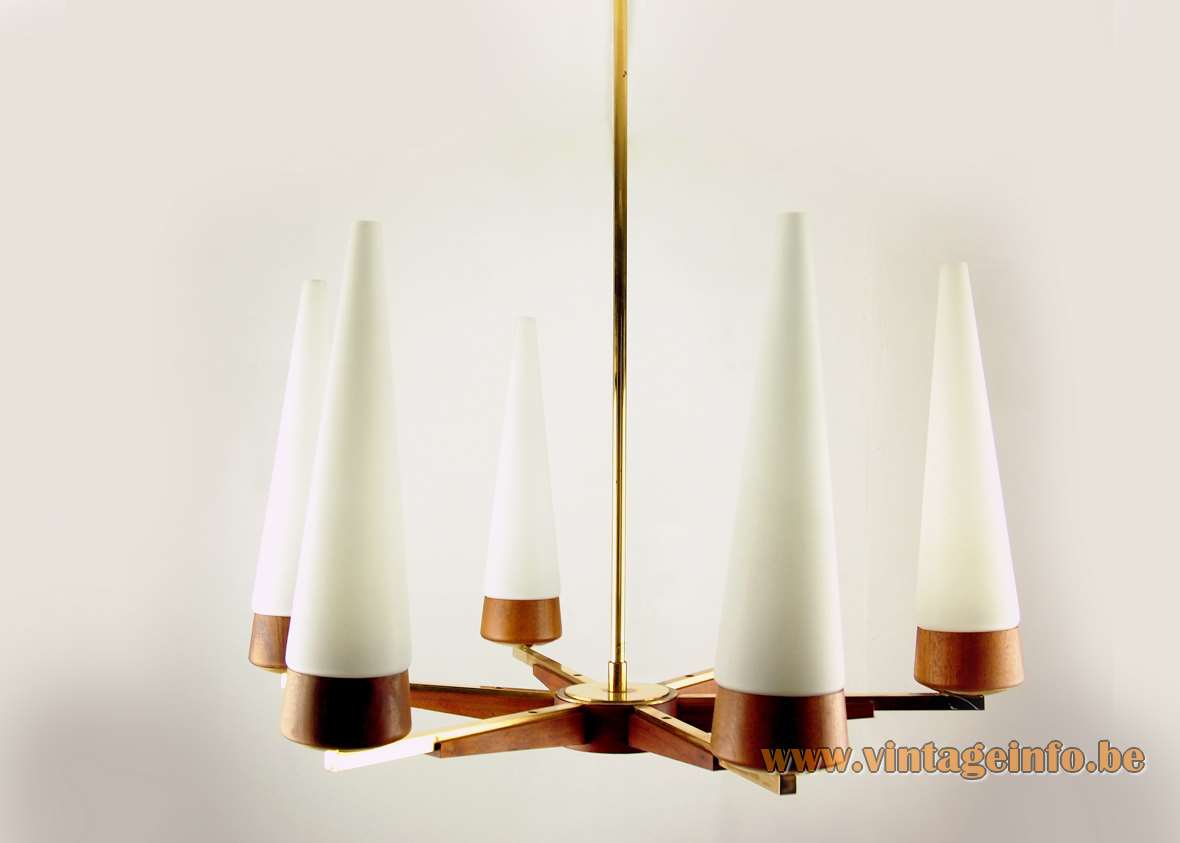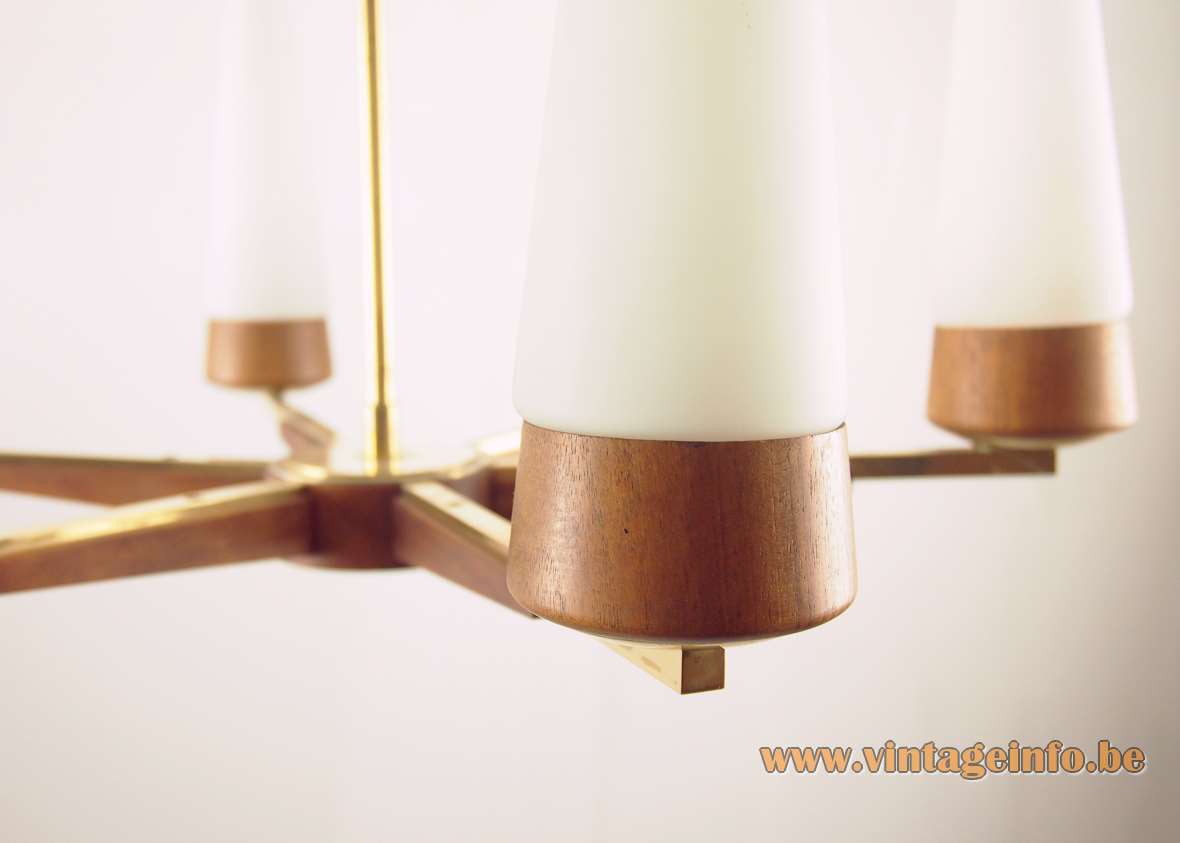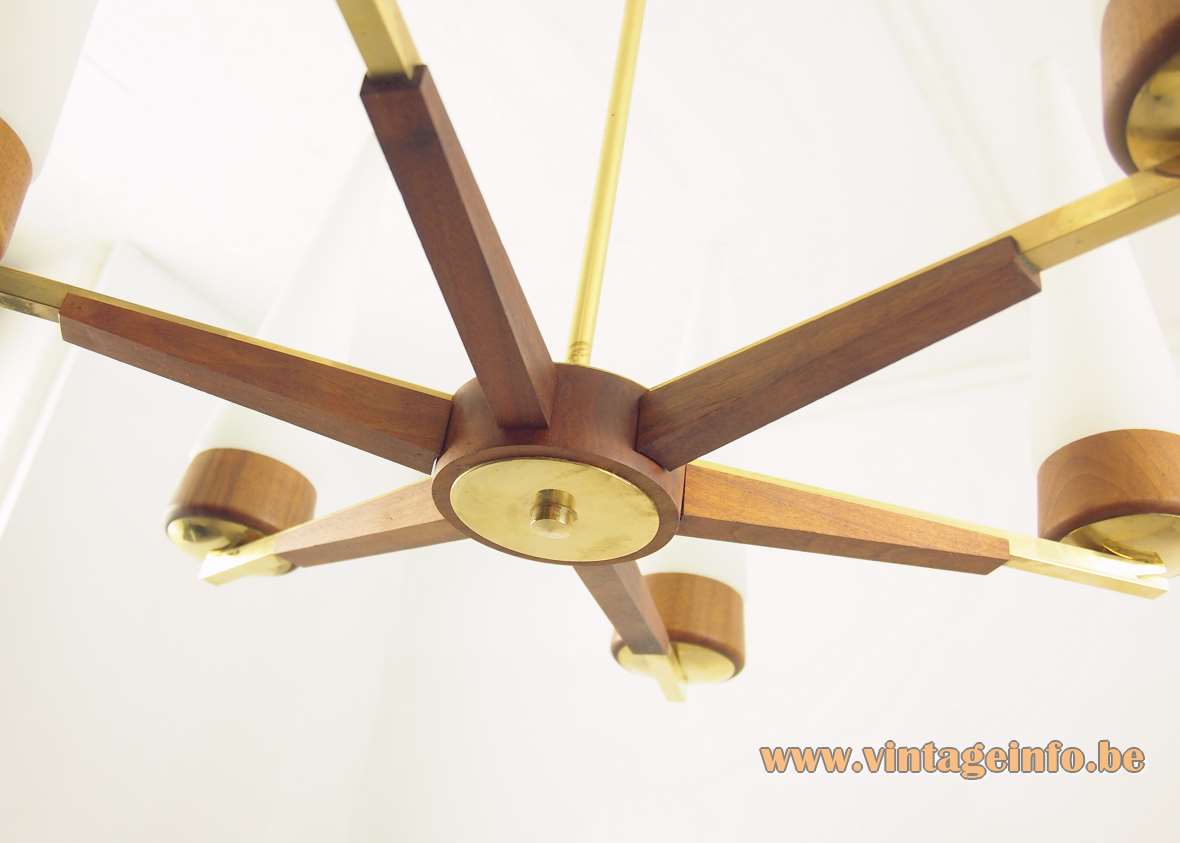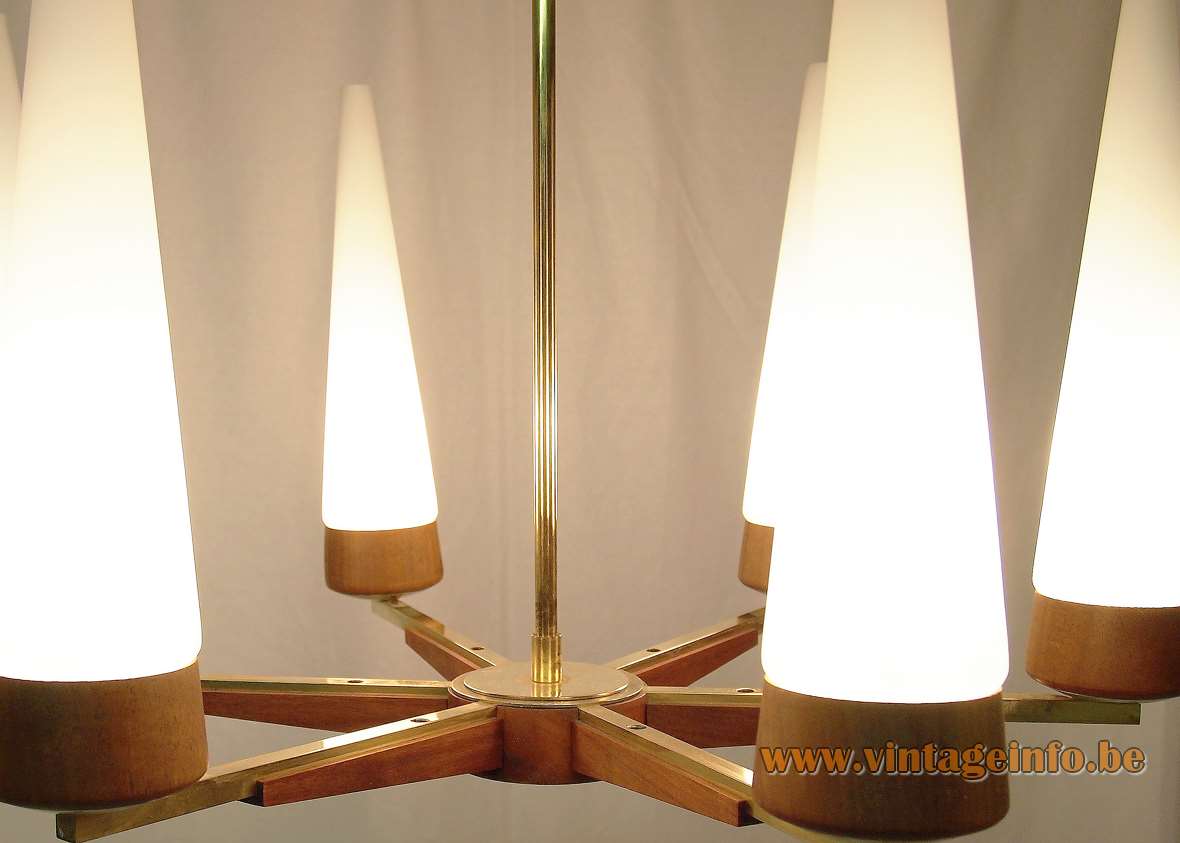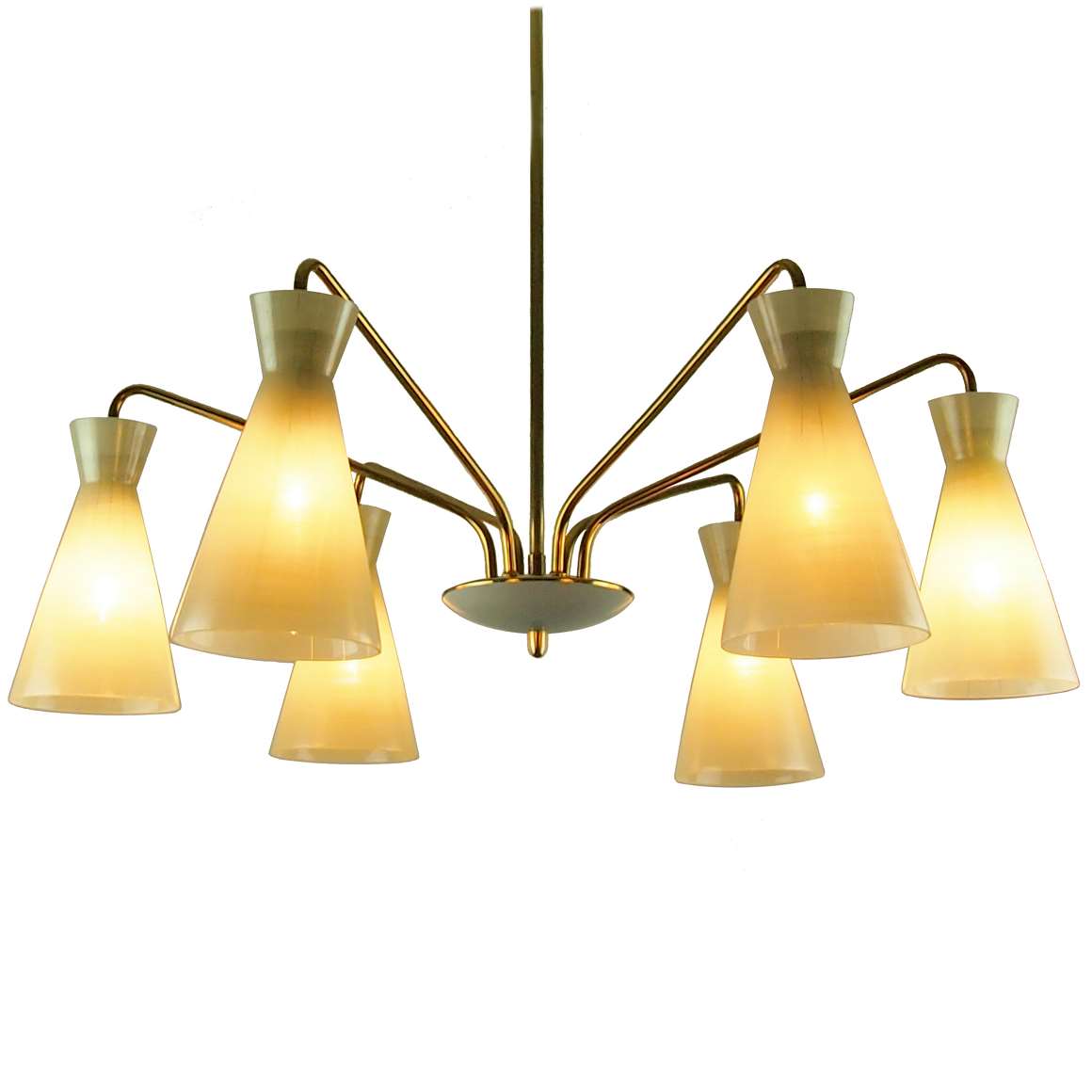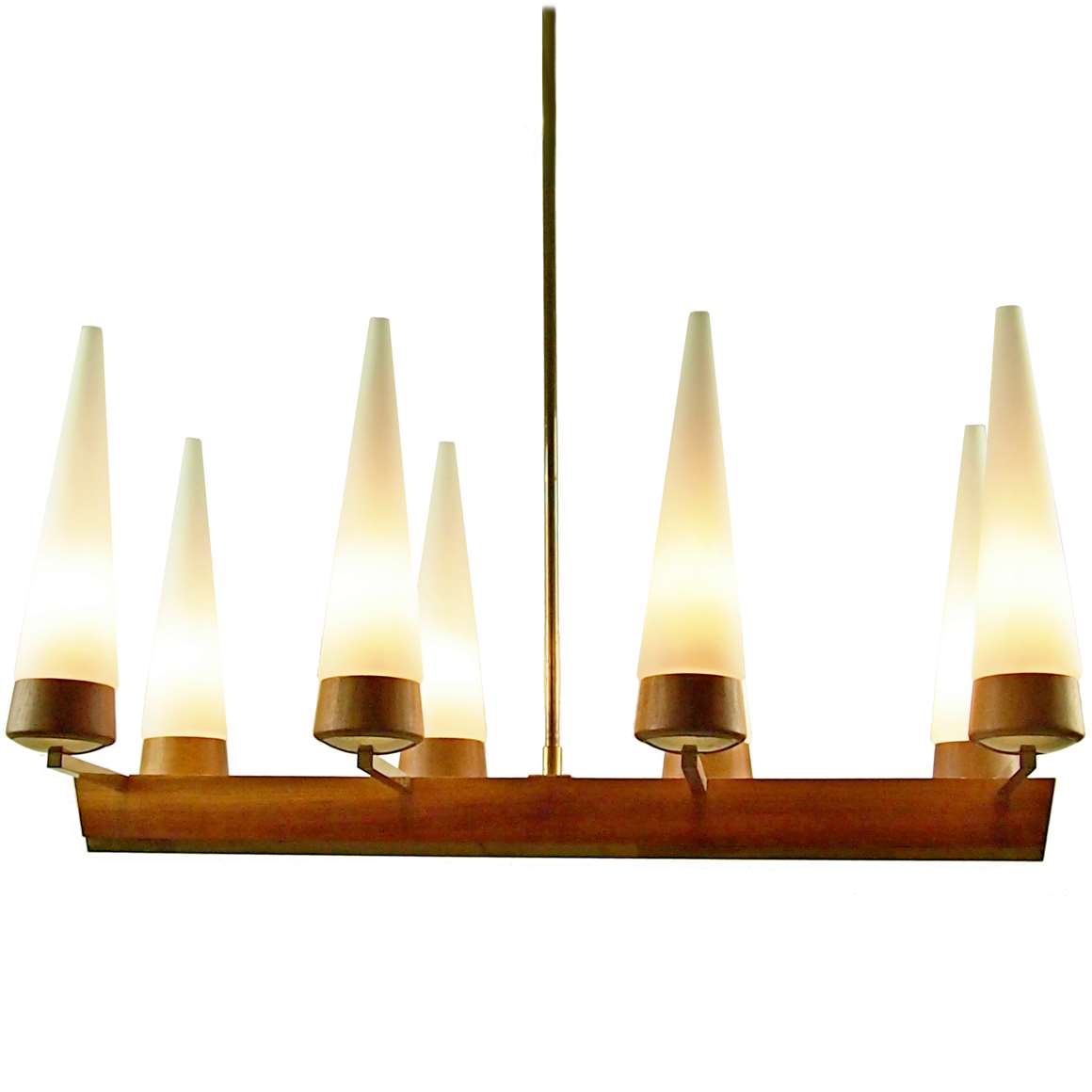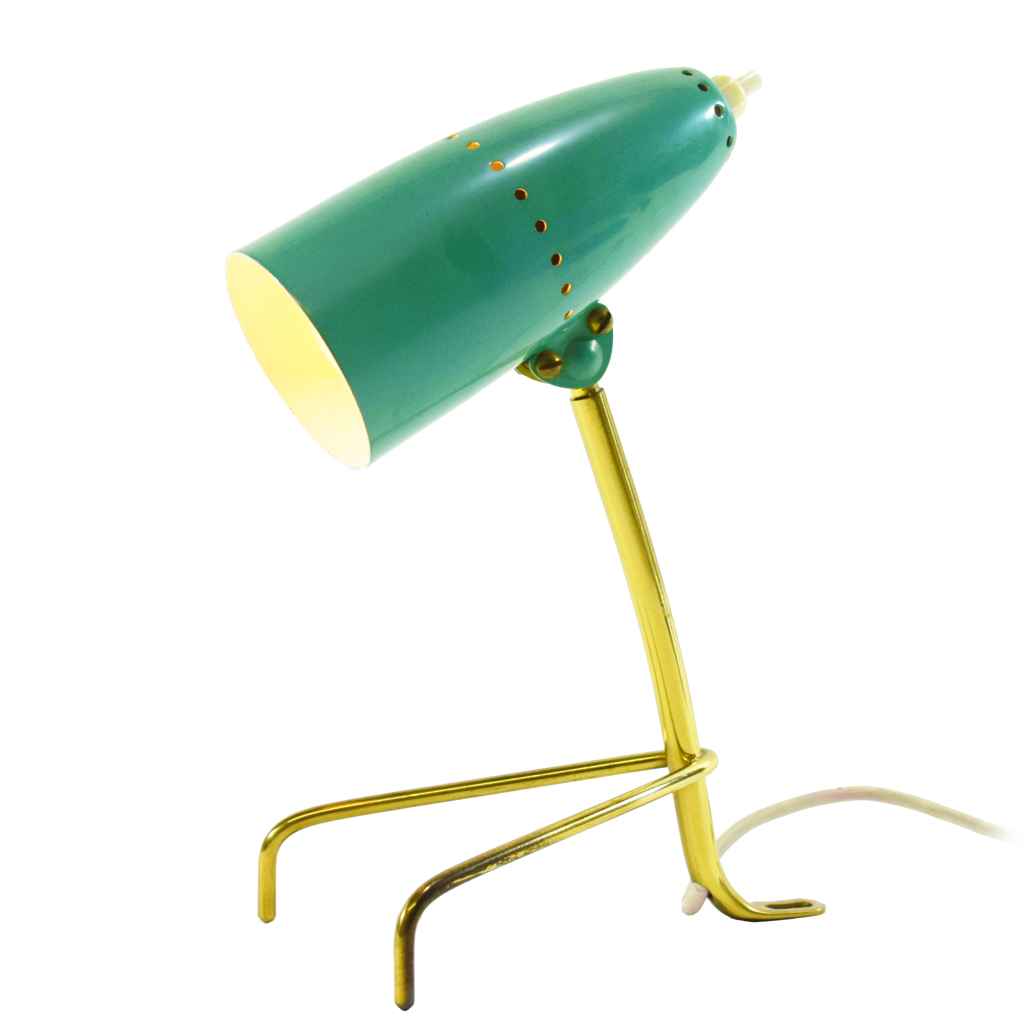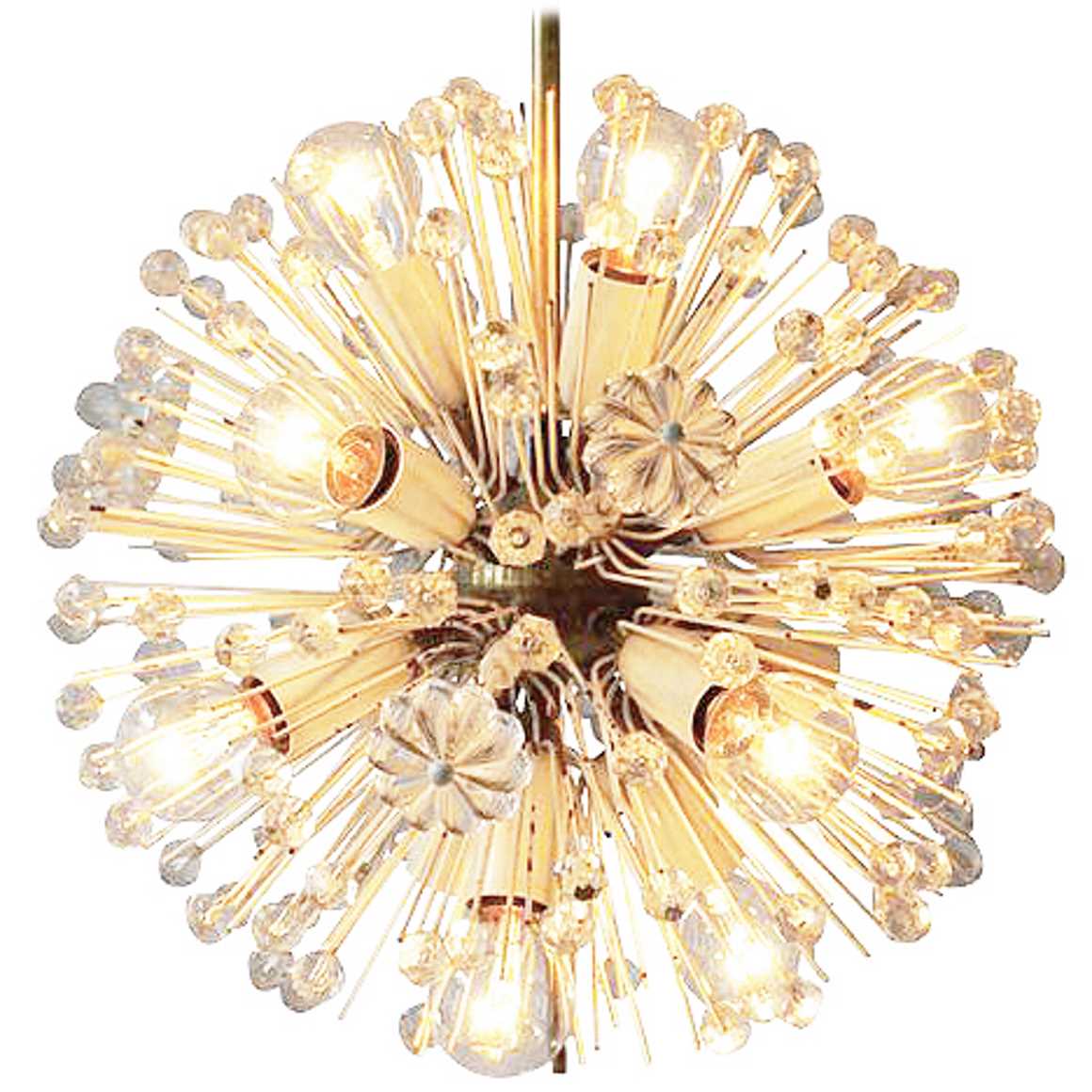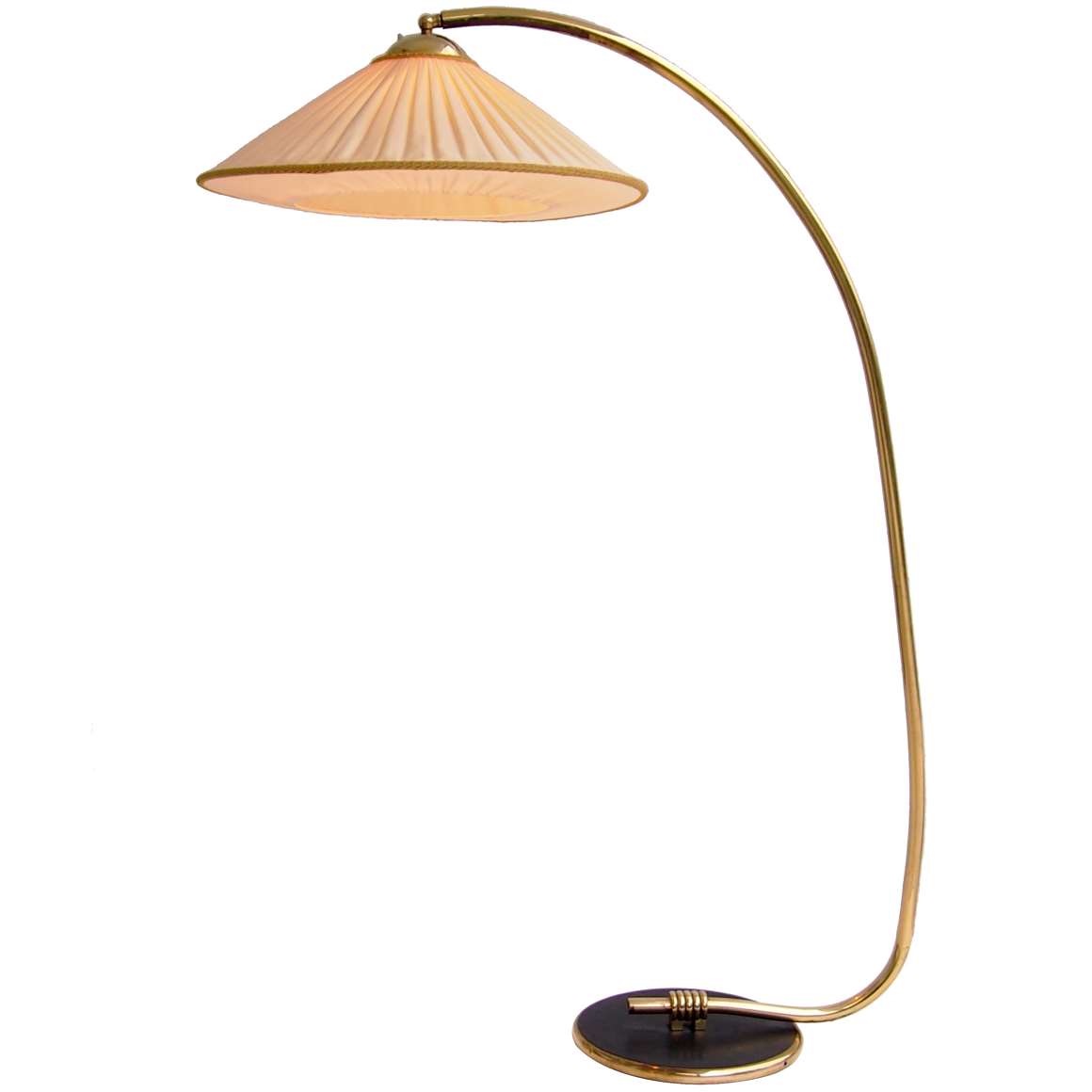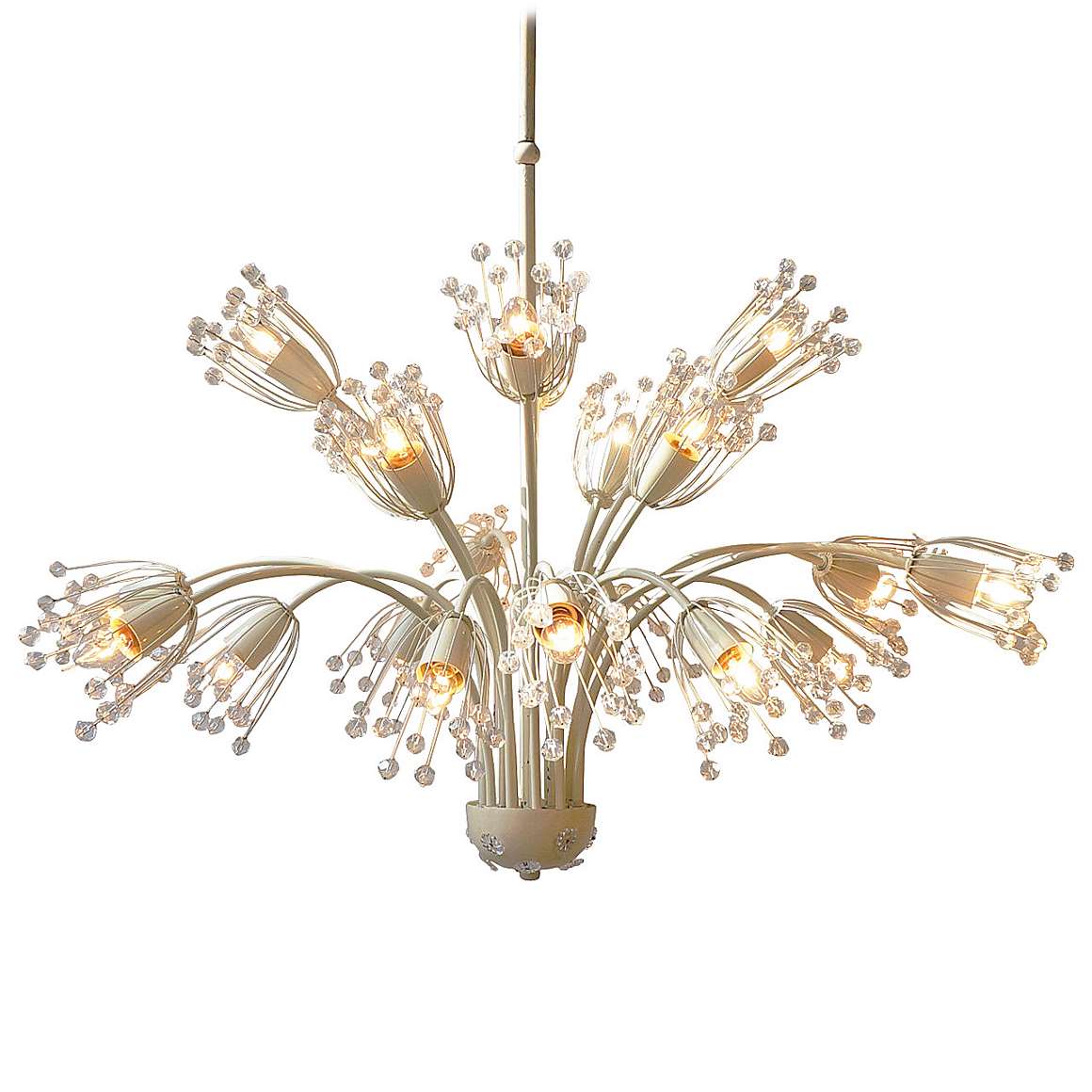Rupert Nikoll Chandelier
Materials: Brass rods and parts. Teak or rosewood parts. Round wood socket holders. 6 long conical white opal frosted glass lampshades. 6 Bakelite E14 sockets.
Rod Length: 80 cm / 31.49”
Height: 60 cm / 23.62”
Width: ∅ 55 cm / 21.65”
Glass: ∅ 7 cm, 25 cm high / 2.75 x 9.84”
Electricity: 6 bulbs E14, 6 x 40 watt maximum, 110/220 volt.
Any type of light bulb can be used, not a specific one preferred. Although, bright light bulbs are not recommended.
Period: 1950s, 1960s – Mid-Century Modern.
Designer: Rupert Nikoll – attributed.
Manufacturer: Beleuchtungskörperfabrik und Beleuchtungsglashütten (lighting equipment factory and lighting glassworks) Rupert Nikoll, Vienna, Austria – attributed.
Other versions: This Rupert Nikoll chandelier with these long conical opaque glass lampshades exists in several variations. A few are on display here on Vintageinfo.
Rupert Nikoll
Little is known about the Rupert Nikoll factory. The company was founded in 1908 and ended business in 1986. In 1966 the company moved to Ober-Grafendorf some 70 km / 43.5 miles from Vienna. Rupert Nikoll also had a branch in Munich, Germany since 1958.
Emil Stejnar (born 1931) is the most famous designer that worked for the company. He is also from Austria. He designed numerous wall and ceiling lights and mirrors decorated with crystal glass flowers in the beginning of the 1950s. In 1957, goldsmith and silversmith Stejnar moved to Sweden. He married and returned to Austria in 1968.
Rupert Nikoll is also known for the “Sumatra ” floor lamp. Made in brass with an organic lampshade. Several lamps were produced with lampshades in this form together with organic materials such as flowers, grasses and cane. Few are left and many have disappeared due to the fragility of the lampshade. You can find a beautiful example here on Vintageinfo.
Links (external links open in a new window)
Vintageinfo
Many Thanks to Ger for the beautiful pictures.
